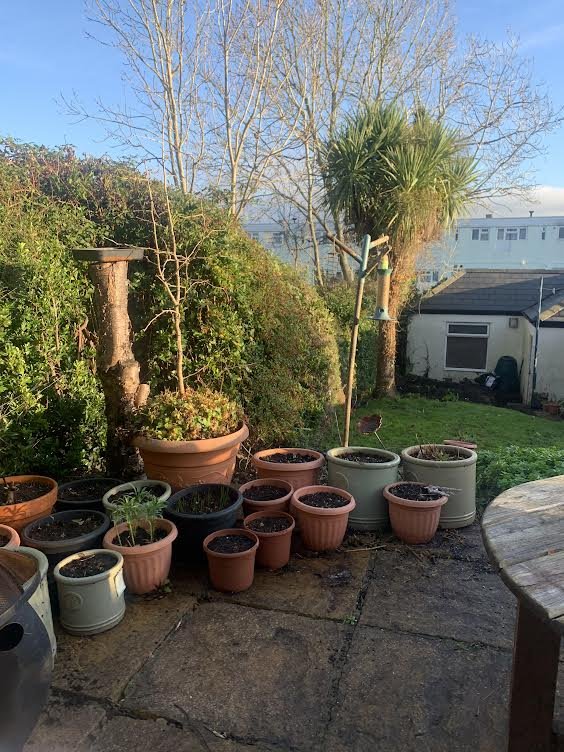The weather is grey, and wet, with rain coming most nights and drizzling on and off most days. Underfoot it’s soggy and walking on the grass feels treacherous and horribly slippery. The plants are all looking at what can only be described as their worst, some with old tatty leaves hanging on by a thread, but mostly they are the skeleton the a garden that has definitely not had a gardeners touch for several years. In the oddly warm winter what I am learning is the weeds that are obviously at home here, as they appear, even during the darkest days of the year. Goosegrass is making itself known along the edges of the hedges, popping it’s fresh green shoots up through the sodden soil and making me nervous at the sheer amount of it. There are a lot of dandelions, as well as daisies in the front garden, some of which were flowering yesterday, but my main adversary here is going to be bamboo……..
Bamboo is beautiful plant but so often misunderstood and so planted in the oddest of places. This is a beauty as a plant and I think has come in from a neighbouring garden that is a few doors down and has a huge stand of it. Likely they have no idea how far it has spread, and I imagine were sold it as a variety that doesn’t spread, as is the phrase. “too badly”, but as with all bamboos once it gets it’s feet in they grow and spread like very little else. And it’s a beauty as I said; five feet tall with large green and glossy leaves. If I had acres I would be more than happy to see it but whilst this is by far the largest garden I have ever stewarded, it’s not the size to cope with bamboo. So over the last few days I have been forced to dig down in beds that I am determined will be as no dig as possible, and remove the shoots as they appear. Delicious bamboo shoots as they appear through the soil, but if they are this voracious in January, I am somewhat dreading June.
The lawns are also sad and sorry. The front garden is without a doubt more moss than grass and I my accidentally have taken up the thatch and sown wild flowers in the areas that were bare, hoping for a riot of colour in early summer. They are “real” wildflowers rather than a pretty mix so I hope that they will work themselves into the foundations of the garden and keep appearing year after year but we will see. Often I struggle to get them to germinate, most likely because I have a tendency to over love them, rather than let them alone to do their thing. They are the independent children of the garden, that get on with it and thrive when left alone.
Storm Arwen rocked us here in Wales and we found our beautiful front hedge damaged by the ravages of the gusts, with a fairly large area of it lost. I was deeply saddened by this as it was full of ripe ivy flowers, so important for pollinators flying in winter, so with that through we are replacing it with more wildlife appropriate planting than the privet that was home to the ivy. Thus far an Ilex Red Dragon has been bought and will be added to in the next months with, I am hoping, a winter flowering honeysuckle and a male holly to make sure the female Red Dragon gets pollinated.
And that is an update from the garden-something I promise every year and rarely manage but this year I will try to do better. Writing about the garden can feel self indulgent and self focused but hears hoping that it supports others as well as offering an insight into building a garden focused on climate and biodiversity crises.


